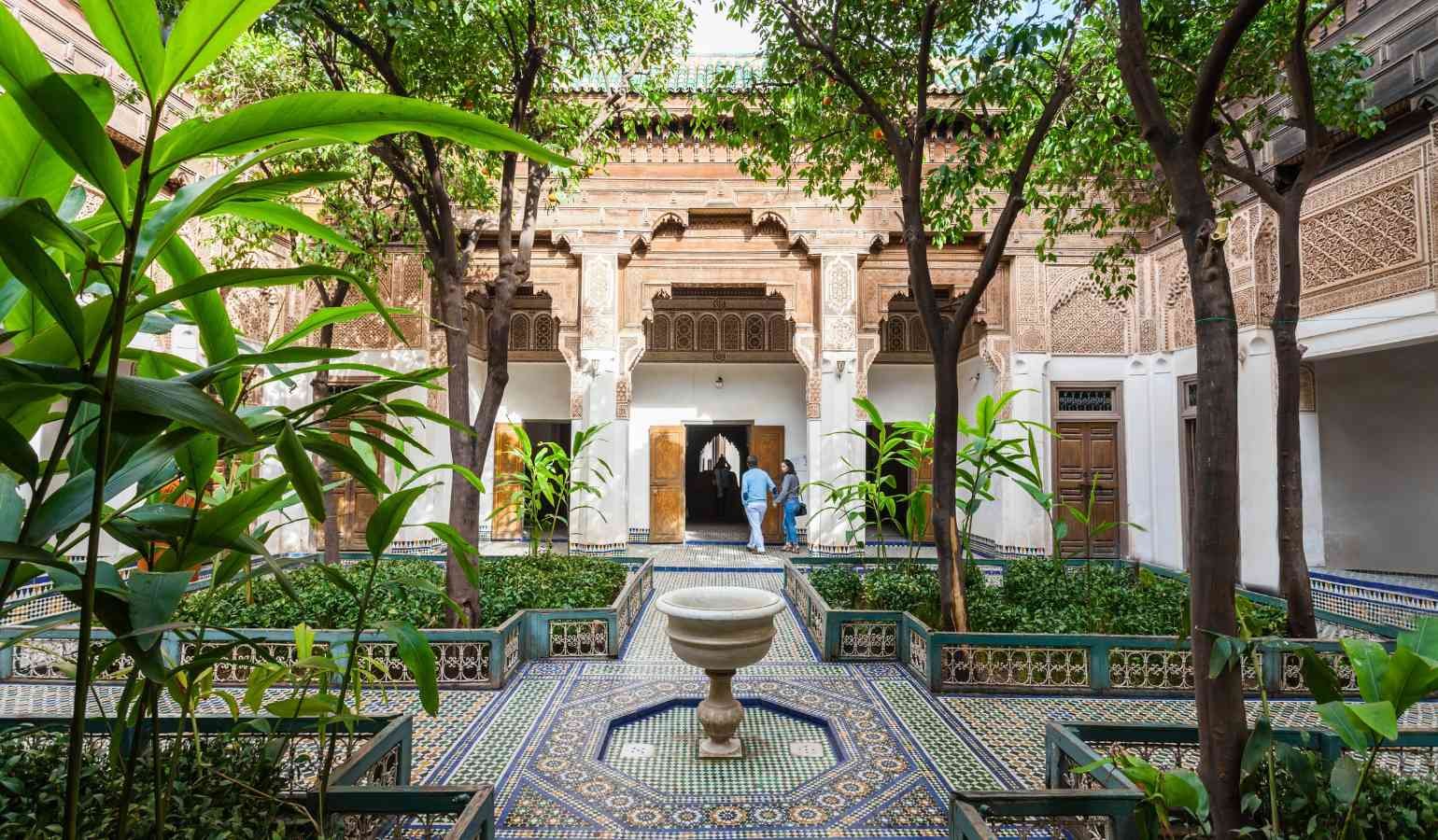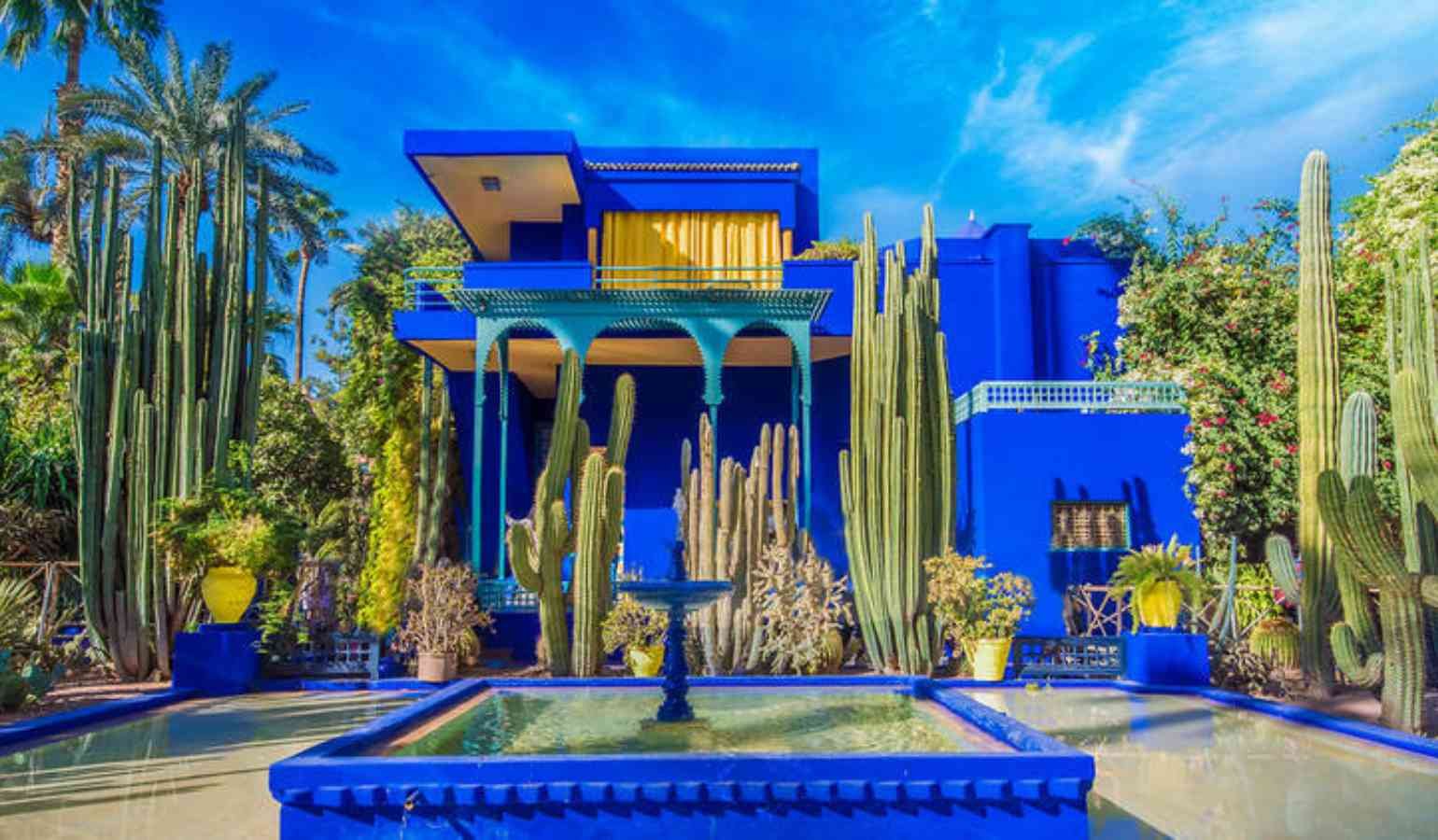Nestled in the heart of Marrakech’s vibrant medina, the Palais Bahia stands as one of the most spectacular examples of Moroccan architecture and design. A masterpiece of opulence and elegance, this 19th-century palace offers a fascinating glimpse into the grandeur of Morocco’s royal past. With its intricate mosaics, lush gardens, and stunning courtyards, the Palais Bahia is a testament to the artistry and craftsmanship that define Morocco’s rich cultural heritage.
The Origins of Palais Bahia: A Dream of Grandeur
The story of Palais Bahia begins in the late 19th century, during a time when Morocco was ruled by the Alaouite dynasty. The palace was commissioned by Si Moussa, the powerful Grand Vizier of Sultan Hassan I, as a private residence. Si Moussa, known for his wealth and influence, envisioned the palace as a symbol of his status and power, a place where he could entertain dignitaries and live in luxury.
A Palace for a Favorite: The name “Bahia,” meaning “brilliance” or “beautiful” in Arabic, is said to have been inspired by Si Moussa’s favorite wife, Bahía, whom he intended to honor with this magnificent residence. Although there are many legends surrounding the origins of the palace’s name, it is widely believed that the Palais Bahia was designed to be a place of unrivaled beauty, worthy of its namesake.
A Vision Realized: Construction of the palace began in the 1860s and continued for decades, with the finest craftsmen from across Morocco brought in to work on the project. These artisans created intricate zellige (mosaic tilework), carved stucco, and cedar wood ceilings that still amaze visitors today. The palace’s design reflects a blend of Islamic and Moroccan architectural styles, with a focus on symmetry, geometry, and harmony with nature.
The Expansion Under Bou Ahmed: A Palace of Splendor
Following Si Moussa’s death, the palace passed into the hands of his son, Abu ‘Bou’ Ahmed, who served as Grand Vizier to Sultan Moulay Abdelaziz. Bou Ahmed was known for his shrewd political acumen and his ability to wield power behind the scenes. He expanded the palace significantly, adding new rooms, courtyards, and gardens, and turning the Palais Bahia into one of the most opulent residences in Morocco.
A Masterpiece of Moroccan Design: Under Bou Ahmed’s direction, the Palais Bahia reached its full splendor. The palace covers nearly eight hectares and includes 150 rooms, each more exquisite than the last. The layout of the palace is labyrinthine, with a series of interconnected courtyards, corridors, and rooms that seem to unfold like a well-kept secret. The most famous of these is the Grand Courtyard, a vast open space adorned with white marble floors, surrounded by columns, and shaded by orange trees.
Gardens of Paradise: The gardens of Palais Bahia are another highlight of this magnificent residence. Designed in the traditional Islamic style, the gardens are filled with fragrant flowers, fountains, and shaded walkways, creating a serene and tranquil environment. The interplay of light and shadow, the sound of trickling water, and the scent of jasmine and orange blossom combine to make the gardens a true paradise on earth.
The Fall of Bou Ahmed: A Palace Left in Splendor
The death of Bou Ahmed in 1900 marked the end of an era for Palais Bahia. With his passing, the palace was stripped of its wealth and treasures, as rival factions within the royal court sought to claim the spoils of his estate. Despite this, the beauty and grandeur of the Palais Bahia endured, and it became a symbol of the lost grandeur of Morocco’s royal past.
A Historic Landmark: In the years that followed, Palais Bahia was used by the French colonial administration as a residence for the Resident General, further cementing its status as one of Morocco’s most important architectural landmarks. Today, the palace is owned by the Moroccan state and is open to the public as a museum and tourist attraction. Its timeless beauty and historical significance continue to draw visitors from around the world, eager to explore its exquisite rooms and gardens.

The Architectural and Cultural Significance of Palais Bahia
The Palais Bahia is not only a masterpiece of Moroccan architecture but also a reflection of the cultural and social dynamics of 19th-century Morocco. The palace’s design and layout offer insight into the lives of the Moroccan elite during this period, with separate quarters for men and women, private gardens for the harem, and luxurious spaces for entertaining guests.
A Fusion of Styles: The architecture of Palais Bahia represents a fusion of Moroccan, Islamic, and Andalusian styles, characterized by intricate geometric patterns, elaborate tilework, and the use of natural elements like wood, stone, and water. The palace’s design emphasizes symmetry and balance, with each element carefully crafted to create a harmonious whole.
A Cultural Treasure: As one of the best-preserved examples of Moroccan palace architecture, Palais Bahia is a cultural treasure that offers a window into the country’s artistic and architectural traditions. The palace’s influence can be seen in the design of other historic buildings in Morocco, and its legacy continues to inspire contemporary architects and designers.
Practical Tips for Visiting Palais Bahia
- Location: Palais Bahia is located in the heart of Marrakech’s medina, just a short walk from the bustling Jemaa el-Fnaa square and other major attractions like the Saadian Tombs and the El Badi Palace.
- Opening Hours: The palace is open to visitors daily, but it’s best to visit early in the morning or late in the afternoon to avoid the crowds. Be sure to check the official website or local listings for up-to-date information on opening hours and ticket prices.
- What to Expect: As you explore the palace, take your time to admire the intricate details of the tilework, wood carvings, and stucco decorations. Don’t miss the Grand Courtyard and the harem quarters, which are some of the most stunning parts of the palace. The gardens are also a highlight, offering a peaceful retreat from the hustle and bustle of the medina.
- Photography: While photography is allowed in most areas of the palace, be respectful of other visitors and the historic nature of the site. Some areas may have restrictions, so be sure to follow any posted guidelines.
Palais Bahia, A Timeless Masterpiece of Moroccan Heritage
Palais Bahia stands as a testament to the artistic brilliance and cultural richness of Morocco. From its humble beginnings as a private residence to its status as one of Marrakech’s most beloved landmarks, the palace embodies the grandeur and sophistication of Moroccan architecture. Visiting Palais Bahia is like stepping back in time, offering a glimpse into the opulent world of Morocco’s royal past and the enduring beauty of its artistic traditions. Whether you’re an architecture enthusiast, a history buff, or simply a traveler looking to experience the magic of Marrakech, Palais Bahia is a destination that should not be missed.



